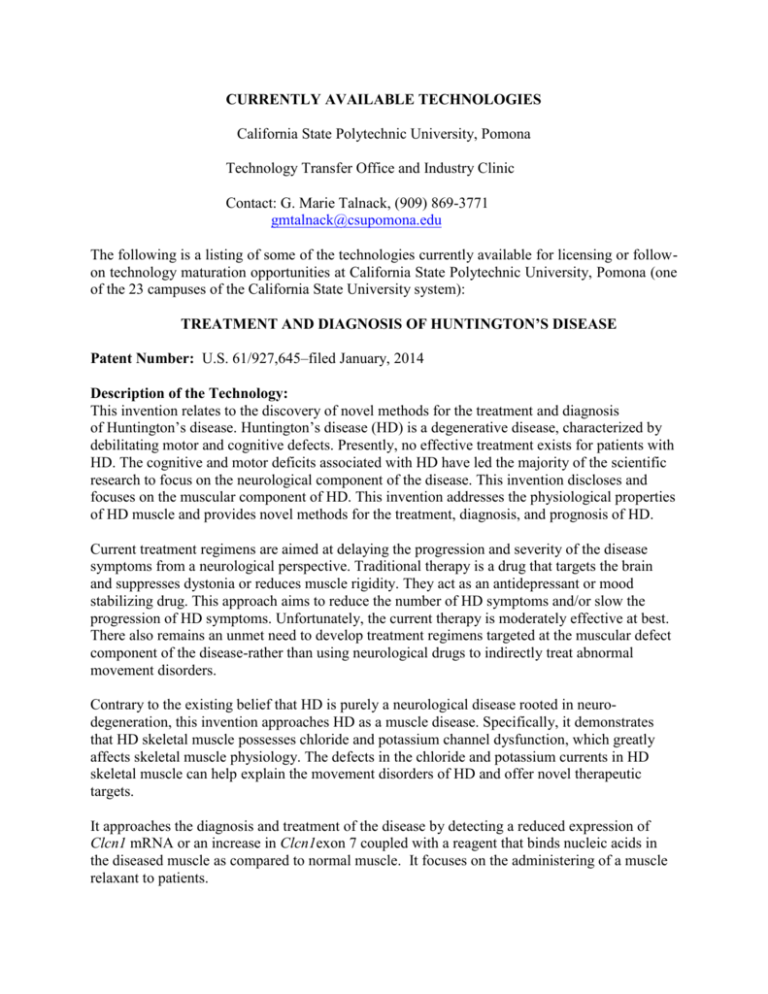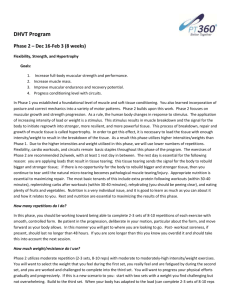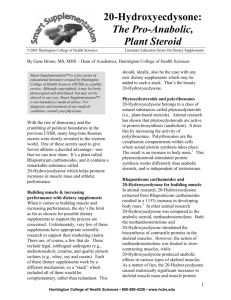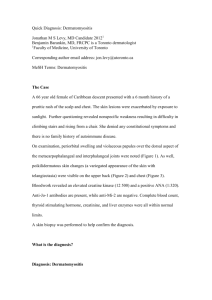treatment and diagnosis of huntington`s disease
advertisement

CURRENTLY AVAILABLE TECHNOLOGIES California State Polytechnic University, Pomona Technology Transfer Office and Industry Clinic Contact: G. Marie Talnack, (909) 869-3771 gmtalnack@csupomona.edu The following is a listing of some of the technologies currently available for licensing or followon technology maturation opportunities at California State Polytechnic University, Pomona (one of the 23 campuses of the California State University system): TREATMENT AND DIAGNOSIS OF HUNTINGTON’S DISEASE Patent Number: U.S. 61/927,645–filed January, 2014 Description of the Technology: This invention relates to the discovery of novel methods for the treatment and diagnosis of Huntington’s disease. Huntington’s disease (HD) is a degenerative disease, characterized by debilitating motor and cognitive defects. Presently, no effective treatment exists for patients with HD. The cognitive and motor deficits associated with HD have led the majority of the scientific research to focus on the neurological component of the disease. This invention discloses and focuses on the muscular component of HD. This invention addresses the physiological properties of HD muscle and provides novel methods for the treatment, diagnosis, and prognosis of HD. Current treatment regimens are aimed at delaying the progression and severity of the disease symptoms from a neurological perspective. Traditional therapy is a drug that targets the brain and suppresses dystonia or reduces muscle rigidity. They act as an antidepressant or mood stabilizing drug. This approach aims to reduce the number of HD symptoms and/or slow the progression of HD symptoms. Unfortunately, the current therapy is moderately effective at best. There also remains an unmet need to develop treatment regimens targeted at the muscular defect component of the disease-rather than using neurological drugs to indirectly treat abnormal movement disorders. Contrary to the existing belief that HD is purely a neurological disease rooted in neurodegeneration, this invention approaches HD as a muscle disease. Specifically, it demonstrates that HD skeletal muscle possesses chloride and potassium channel dysfunction, which greatly affects skeletal muscle physiology. The defects in the chloride and potassium currents in HD skeletal muscle can help explain the movement disorders of HD and offer novel therapeutic targets. It approaches the diagnosis and treatment of the disease by detecting a reduced expression of Clcn1 mRNA or an increase in Clcn1exon 7 coupled with a reagent that binds nucleic acids in the diseased muscle as compared to normal muscle. It focuses on the administering of a muscle relaxant to patients. Features: -Muscle relaxants of this invention can be administered in combination with a traditional HD therapy that targets the brain. -The methods can be used to detect the disease before a patient manifests physical symptoms and monitor the progression of the disease. -Covered treatments can slow the expression of physical symptoms and the number and severity of symptoms. -A medical professional can readily prescribe the effective amount of the pharmaceutical composition required. -The treatment utilizes therapeutics already approved for other disorders that can be administered orally or intravenously (injections, syringes, or saline drip system). -The treatments can also be administered in a kit containing necessary reagents with accompanying instructions, labels, warning and information. Market Potential: More than a quarter of a million Americans have HD or are "at risk" of inheriting the disease from an affected parent. The annual direct economic burden of HD is substantial and increases with disease progression. Besides the direct medical costs associated with the disease there are significant indirect costs such as time spent and working days lost caring for the patient. Notice: This invention was made with Government support of Grant No. NIH 1SC3GM096945, awarded by the National Institute of Health, and by a CSUPERB New Investigator S12 Grant awarded by the California State University.











